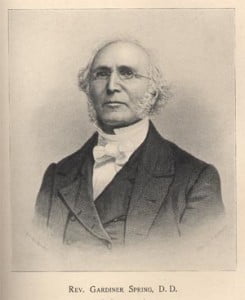A Historian for a Historical Devotional
 The Presbyterian minister was convinced that when young men were called into the ministry, and then left the state of Texas for their religious training, most of them never returned to the Lone Star State. So there was obviously one solution, namely, begin a theological seminary in Texas. And he did, even giving the land for it, and today Austin Theological Seminary (a seminary of the PCUSA) is in existence today.
The Presbyterian minister was convinced that when young men were called into the ministry, and then left the state of Texas for their religious training, most of them never returned to the Lone Star State. So there was obviously one solution, namely, begin a theological seminary in Texas. And he did, even giving the land for it, and today Austin Theological Seminary (a seminary of the PCUSA) is in existence today.
The Texas minister was William Stuart Red. Born in 1857, though some say 1860, in Washington County, Texas, he attended for a while a university in Tennessee before transferring to Austin College in Austin, Texas. He then studied at Princeton Seminary for one year before transferring to Columbia Theological Seminary in 1884-85. Finally, he returned back to the Lone Star State to Austin School of Theology and graduated from there in 1886. After some further study in Germany and Scotland, he returned for licensure and ordination as a Presbyterian minister in the Presbyterian Church in the United States in 1887.
He was the pastor at six Presbyterian churches in Texas. Beyond his care for the churches, he was also interested in a central depository for Presbyterian and Reformed history. So, along with the Rev. Samuel Terry, Rev. Red gave funds for the creation of the Historical Foundation of Reformed and Presbyterian Churches at Montreat, North Carolina.
Before he died on July 8, 1933, his project after retirement from the ministry was the History of the Presbyterian Church in Texas. His family finished up the 500 page book after his death from papers he had written. Our PCA Historical Center has a copy of it in St. Louis, Missouri.
Words to Live By: He seemed to be larger than life, but then aren’t all Texans? Yet it is important to remember that his love for the state of Texas was grounded in Christian Presbyterianism in Texas. Paul’s haunting question in the New Testament was “How shall they hear without a preacher?” Rev. Red wanted Presbyterian preachers to train and serve their Lord and God so that his fellow Texans could hear the unsearchable riches of God’s grace. That is true for all of our states. Pray for where God has placed you on this day that the everlasting good news of eternal life might impact your state.
Through the Scriptures: Isaiah 4 – 6
Through the Standards: The fourth commandment: Duties required according to the Confession
WCF 21:7
“As it is the law of nature, that, in general, a due proportion of time be set aside for the worship of God; so, in His Word, by a positive, moral, and perpetual commandment binding all men in all ages, He has particularly appointed one day in seven, for a Sabbath, to be kept holy unto him; which, from the beginning of the world to the resurrection of Christ, was the last day of the week; and, from the resurrection of Christ, was changed into the first day of the week, which, in Scripture, is called the Lord’s Day, and is to be continued to the end of the world, as the Christian Sabbath.”

